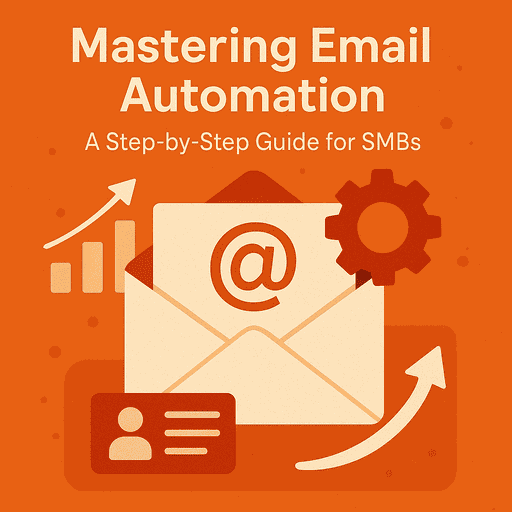Imagine sending a welcome email to every new subscriber, a reminder to every customer who leaves items in their cart, and a follow-up message after each purchase—all without lifting a finger. That's the power of email automation. For SMBs, it means saving time, increasing revenue, and building stronger customer relationships.
What is Email Automation?

Email automation involves sending emails to your customers automatically, based on specific triggers or schedules. These triggers can include actions like signing up for a newsletter, making a purchase, or abandoning a shopping cart. By automating these communications, businesses ensure timely and relevant interactions with their audience.
Why Email Automation Matters for SMBs
Time Efficiency
Automated emails free up valuable time, allowing you to focus on other aspects of your business.
Consistent Communication
Maintain regular contact with your customers without manual effort.
Increased Revenue
Timely emails, such as cart reminders or special offers, can boost sales.
Improved Customer Experience
Personalized messages enhance customer satisfaction and loyalty.
Step-by-Step Guide to Setting Up Email Automation
-
1 Define Your Goals
Determine what you want to achieve with email automation—be it welcoming new subscribers, recovering abandoned carts, or re-engaging inactive customers.
-
2 Choose the Right Tool
Select an email marketing platform that suits your needs. Popular options include Mailchimp, ActiveCampaign, and Omnisend.
-
3 Segment Your Audience
Divide your email list based on customer behavior, preferences, or demographics to send targeted messages.
-
4 Create Engaging Content
Craft compelling subject lines and email content that resonate with your audience.
-
5 Set Up Triggers
Define the actions that will trigger your automated emails, such as a new subscription or a completed purchase.
-
6 Test and Optimize
Monitor the performance of your automated emails and make necessary adjustments to improve open rates and conversions.
Best Practices for Effective Email Automation
Personalization
Use the recipient's name and tailor content to their interests.
Clear Call-to-Action (CTA)
Ensure each email has a specific, easy-to-understand CTA.
Mobile Optimization
Design emails that look good on all devices.
Regular Updates
Keep your email list clean and your content fresh.
Common Mistakes to Avoid
-
Over-Automation
Sending too many automated emails can overwhelm recipients.
-
Neglecting Analytics
Failing to monitor email performance can lead to missed opportunities for improvement.
-
Ignoring Compliance
Ensure your emails comply with regulations like the CAN-SPAM Act.
Top Email Automation Tools for SMBs
EmailsBird
RecommendedEasy to use, Free to start, High Conversion rate.
Mailchimp
User-friendly with robust automation features.
ActiveCampaign
Offers advanced segmentation and CRM integration.
Omnisend
Ideal for e-commerce businesses with omnichannel capabilities.
MailerLite
Affordable option with essential automation tools.
Frequently Asked Questions
How often should I send automated emails?
It depends on your audience and goals. Monitor engagement metrics to find the optimal frequency.
Can I automate emails for different customer segments?
Yes, segmentation allows you to tailor automated emails to specific groups based on behavior or preferences.
What types of emails can I automate?
Common automated emails include welcome messages, cart abandonment reminders, post-purchase follow-ups, and re-engagement campaigns.
Conclusion
Email automation is a game-changer for SMBs, offering a cost-effective way to engage customers and drive sales. By setting clear goals, choosing the right tools, and following best practices, you can harness the power of automation to grow your business.

